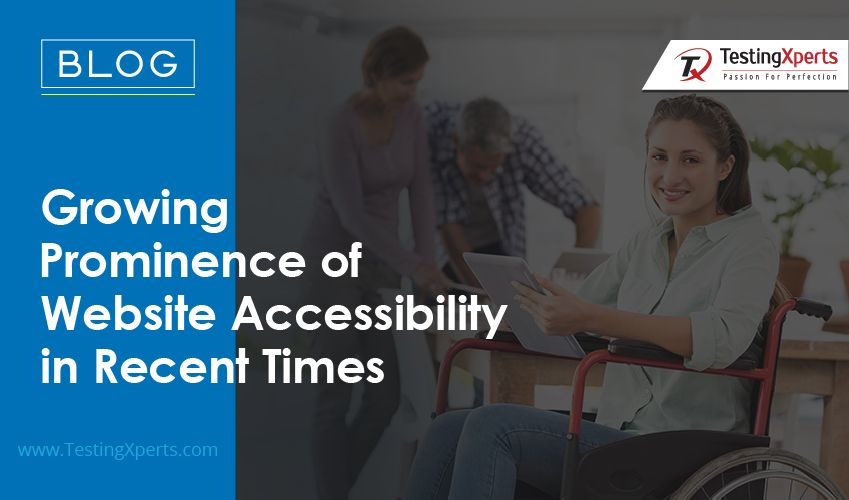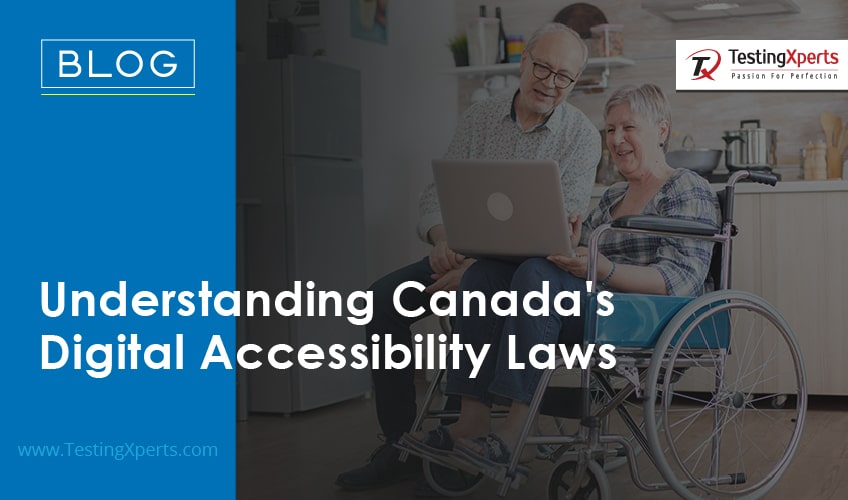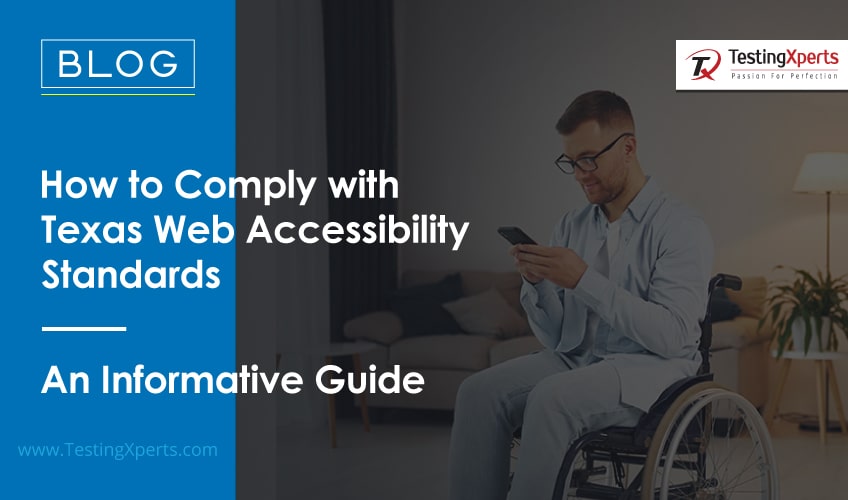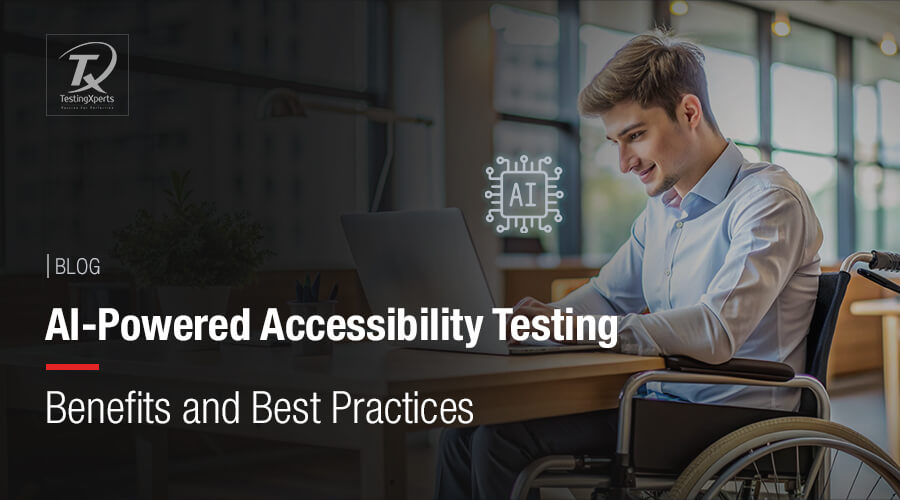
- AI-Powered Accessibility Testing
- 5 Benefits of Leveraging AI in Accessibility Testing
- Top 5 Best Practices for AI-Powered Accessibility Testing
- How can Tx assist with AI-Powered Accessibility Testing?
- Summary
Businesses have a moral duty to make their apps and websites accessible to everyone, including users with disabilities. However, to deliver an accessible experience, they must know the areas for improvement and the aspects their product lacks. According to an analysis, almost 67% of the apps are discarded due to inconvenience and accessibility issues. This happens because of poor accessibility testing and companies not following proper guidelines and regulations. Hence, it becomes necessary to keep track of the product’s performance, usability, and appeal pre- and post-deployment by integrating the best web and app accessibility testing practices.
As technology rapidly evolves, businesses should look for the latest innovations, such as AI-powered accessibility testing, to make their products more appealing to users. This involves utilizing AI solutions to evaluate and improve digital content and web and mobile app accessibility. It also ensures the product complies with regulatory standards such as WCAG guidelines. The blog will discuss how AI influences accessibility testing and benefits businesses in the long run.
AI-Powered Accessibility Testing
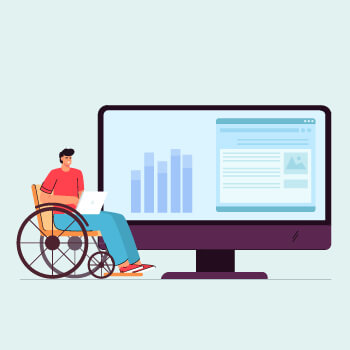
Utilizing the power of AI, this approach brings efficiency and sophistication to accessibility testing that was unattainable previously. It is not just a trend but a transformation that is making digital products more inclusive. Let’s take a close look at some of the key aspects of AI-powered accessibility testing:
• AI assists in automating the testing process by automatically identifying accessibility issues. The issues could be missing alt text for images, wrong color coding, insufficient color contract, improper use of Accessible Rich Internet Applications roles, etc.
• Natural Language Processing (NLP) enables businesses to analyze the text of their app or website for clarity and readability issues. It also ensures that the content is readable and understandable for cognitive-disabled users. Businesses can ensure that their product follows proper text structure and format guidelines.
• Computer vision allows businesses to analyze images and videos to ensure content readiness. It ensures they have appropriate captions, descriptions, and alt text, and the visual content is accessible to all users, including those with visual impairments.
• Businesses can utilize AI-powered voice recognition systems to assess the accessibility of integrated voice interfaces. It ensures that the products are accessible to users with hearing or speech impairments.
• Integrating AI with product development and testing can help predict potential accessibility issues. This involves assessing user interactions, identifying accessibility problems, and offering improvement suggestions.
5 Benefits of Leveraging AI in Accessibility Testing
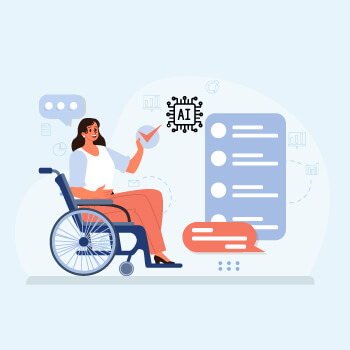
One of the primary benefits of AI-powered accessibility testing is its ability to test across various devices and platforms. With the rise in different devices and operating systems, businesses must ensure their products are accessible on all platforms. AI-based accessibility testing helps save time and effort for the QA teams, allowing them to focus on priority tasks. Let’s take a look at some of the benefits of leveraging AI in accessibility testing:
• AI can assist with the early detection of accessibility issues, making the QA process more cost-effective and efficient. Also, integrating it during the development phase would be much wiser than waiting for users to point out issues after the product launch.
• It assists businesses in making digital products more accessible to everyone. By catering to the different needs of every user, especially those with disabilities, businesses can enhance the overall UX.
• With AI-powered accessibility testing, businesses can cover a broader range of disabilities and use cases and ensure their products are usable to a wider audience.
• Human errors may occur in manual testing and go unnoticed during the QA process. AI helps reduce/mitigate human errors and ensures more consistent and accurate detection of accessibility issues.
• Businesses can easily integrate AI tools into development pipelines. This offers ongoing accessibility checks whenever new content is added or changes are made to the product.
Top 5 Best Practices for AI-Powered Accessibility Testing
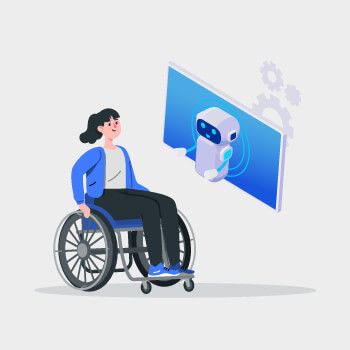
Using a new technology can be very intimidating, particularly when figuring out what it can and can’t do. Sometimes, when businesses fail to deliver the required results or fulfill user expectations, they come under the risk of regulatory violations. This can affect the company’s reputation and lead to losing potential customers. This is why it becomes necessary to follow certain practices that can ensure the proper utilization of AI-powered accessibility testing:
• AI tools alone are powerful, but they need a seamless integration plan with manual testing. This comprehensive approach could assist businesses with repetitive task automation. In contrast, they can utilize manual testers to assess the overall UX and figure out complex issues like keyboard navigation.
• Stay updated with the latest WCAG standards and relevant compliances. This will allow you to properly align AI tools with the required compliance levels, such as WCAG 2.1 and 2.2.
• AI-powered accessibility testing allows businesses to scale their large projects easily. One must ensure that their AI tools can handle and scale the application. This is handy when dealing with complex or dynamic content.
• These days, there are many devices, operating systems, and platforms. Running tests across diverse devices and browsers can ensure consistency in accessibility. Businesses can use AI-powered tools to simulate different OS environments, enabling easy issue detection that might only appear on certain devices under certain conditions.
• Collect user feedback (especially from users with varying disabilities) to validate AI-driven testing results. This will ensure that the improvements suggested by AI to enhance accessibility benefit every user and appropriately meet their needs.
How can Tx assist with AI-Powered Accessibility Testing?

The increasing utilization of applications is now a core aspect of everyone’s lives. One must ensure the optimal accessibility of their software products to ensure they are accessible to people with disabilities. Automating the testing process is the best way to streamline, scale, and simplify the path to accessibility. At Tx, we offer an extensive array of accessibility testing services and advanced expertise and understanding of AI and accessibility testing standards, such as WCAG 2.0, 2.1, and 2.2.
By leveraging advanced AI tools and solutions, we automate identifying and remediating accessibility issues across your web and mobile platforms. Our AI-driven accessibility testing approach assists our clients in enhancing the UX for users with special abilities and streamlines the compliance process, saving crucial time and resources. We also offer comprehensive reporting and actionable insights that could help you address accessibility challenges more effectively while maintaining an inclusive digital ecosystem.
Summary
AI-powered accessibility testing significantly enhances the ability to create inclusive digital experiences by automating and improving the detection and resolution of accessibility issues. By integrating AI tools into the development process and adhering to best practices, organizations can ensure their digital products are accessible to all users, including those with disabilities. Another way is to partner with a professional accessibility testing services provider like Tx, who can assist with ensuring optimal performance and utilization of your software products. To learn more, Tx can help you with AI-powered accessibility testing solutions; contact our experts now.
Discover more
Get in Touch
Stay Updated
Subscribe for more info


